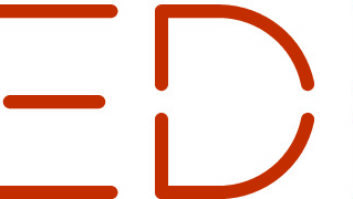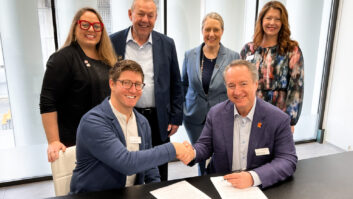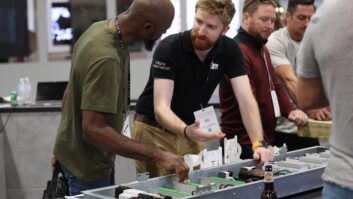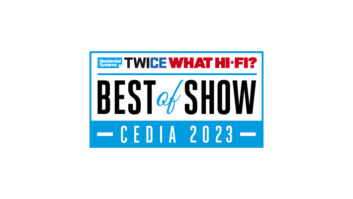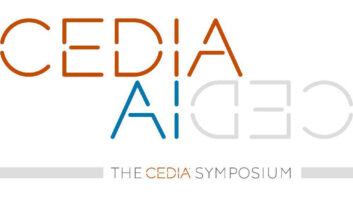INDIANAPOLIS — Evidence mounted during the CEDIA Expo that massive changes are in store for the custom-installation industry, but key industry players said they expect installers will continue to prosper if they change with the times.
Seminar lecturers hammered away at the need for A/V installers to develop new disciplines, including computer networking, broadband-modem, lighting and security installation. They pointed to more cellular-like compensation models in which hardware prices are tied to service agreements.
And they described how computer-industry technology and proposed home-network standards will force staff to develop information-technology (IT) skills.
One portent of change was Microsoft’s first-ever Expo exhibit, which the company used to demonstrate potential applications for the Universal Plug and Play (UPnP) home-networking standard that it is championing through the UPnP Forum.
While waiting for UPnP and other home-networking standards to gain a foothold, however, installers found new tools at the Expo to help them today in delivering the same functionality — although without the plug-and-play simplicity promised by many of the planned standards.
For example:
· More A/V suppliers announced partnerships with systems-integration suppliers. Their intent is to simplify the integration of their A/V products into home-control systems, making it possible to control multiple home subsystems from a single control panel or touchscreen.
· Another distributed-audio supplier, Sonance, developed a multiroom audio system with home-control functions. Last year, distributed-audio supplier Elan did so.
· And Sony said it is developing custom-programming services for Sony installers. The service is intended for customers who want to integrate multiple products into Crestron and AMX home-control systems but don’t employ on-staff programmers.
By CEDIA’s reckoning, these developments reflect advancements in systems integration, which it defined at the show as the “development of a system [or home network] that controls and communicates information between intelligent subsystems.
The definition includes one-button control of multiple home functions and centralized control of multiple subsystems through the same control panel or interface.
Home networking, on the other hand, “is the technology that allows all electronic devices in the user’s environment to seamlessly communicate with each other and the outside world,” CEDIA said.
In system-integration advancements at the show, Panja announced that since early this year, it has more than doubled the number of manufacturer partners shipping products compatible with its home-control systems.
Some of the latest of the roughly 100 partners include Sony and Kenwood, and in coming weeks, Thomson will have products, said Panja VP Jim Gist. Other new Panja partners are ADA, Arrakis, Carrier, JBL, Lexicon, Onkyo, Pioneer, Russound, Seleco and McIntosh.
Panja is also working with at least 100 other companies, mostly in the CE industry, Gist said.
In a similar development, Pioneer and Russound said they’ve begun to share control codes with systems-integration supplier Crestron, and Smart Systems said it will incorporate control of Russound distributed-audio systems in its integrated system’s touchscreens.
For its part, Kenwood announced plans to simplify the integration of 13 of its components with Niles distributed-audio systems. Kenwood said it is the first A/V supplier to provide installers with a disk containing its products’ control codes. Installers can use Niles programming software to drag and drop the codes into a Niles system, making it unnecessary to go through a learning-remote-like process.
And Sonance unveiled its Network Navigator, a multizone multisource distributed audio system that also controls subsystems such as lighting, security, and within 90 days, HVAC systems.
In other show developments:
· Crestron, Leviton and Pragmatic Technology displayed some of the first products that distribute DVD-quality video through relatively thin, relatively inexpensive CAT 5 cable, replacing bulky, more expensive coax. Crestron and Pragmatic also deliver line-level stereo over CAT 5.
· Pragmatic’s technology will be marketed sometime next year by Russound. Crestron’s system is due in six months, and Leviton introduced the capability as part of a new structured-wiring system. All use send-receive technology, with Pragmatic taking a digital encode-decode approach.
· More structured wiring systems were unveiled with music- and video-distribution capabilities. Leviton introduced multiple systems, and Elan showed a system that it and Honeywell will market under Honeywell’s Your Home Network brand.
Elan’s capabilities are the most basic. Its structured-wiring enclosure accepts a one-zone amplifier that can power up to 24 speakers and uses in-wall volume controls. Leviton delivers two stereo zones or four mono zones.







